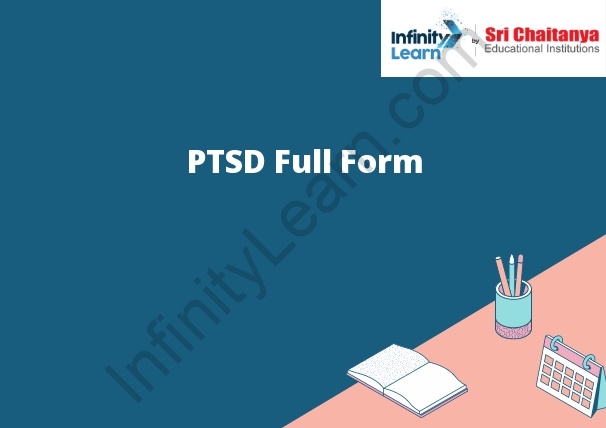Table of Contents
Post-traumatic stress disorder (PTSD) is a mental disorder that can develop after a person experiences or witnesses a traumatic event, such as a natural disaster, a car accident, a sexual assault, or a war. People with PTSD may feel stressed or frightened after the event and have flashbacks, nightmares, or intrusive thoughts about the event. PTSD Full Form

Symptoms of Post-Traumatic Stress Disorder
PTSD is a mental health condition that can occur after a person experiences or witnesses a traumatic event. Symptoms can include flashbacks, nightmares, severe anxiety, and uncontrollable thoughts about the event.
Associated medical conditions of Post-Traumatic Stress Disorder
There are many associated medical conditions with PTSD. These can include, but are not limited to, the following:
- Depression
- Anxiety
- Substance abuse
- Eating disorders
- Suicide
Diagnosis of Post-Traumatic Stress Disorder
There is no definitive test for diagnosing post-traumatic stress disorder (PTSD). A mental health professional will typically diagnose PTSD based on a clinical interview and a review of the individual’s symptoms.
The clinician will inquire about the individual’s symptoms and when they began. The individual’s symptoms will be compared to the criteria for PTSD listed in the Diagnostic and Statistical Manual of Mental Disorders (DSM-5).
There are three main clusters of symptoms that are typically used to diagnose PTSD:
Re-experiencing symptoms: These are symptoms that involve reliving the traumatic event. This may include flashbacks, intrusive memories, nightmares, and emotional distress after exposure to reminders of the event.
Avoidance symptoms: These symptoms involve efforts to avoid any reminders of the traumatic event. This may include avoiding the event’s people, places, thoughts, or feelings.
Arousal and reactivity symptoms involve constantly feeling on edge and being easily startled. They may also include problems with concentration, sleep, and feeling numb or detached from others.
PTSD can also be diagnosed if the individual has symptoms of both anxiety and depression.
Treatment of Post-Traumatic Stress Disorder
There is no one-size-fits-all approach to treating post-traumatic stress disorder (PTSD), as the condition can vary in severity and presentation from person to person. However, some common treatment approaches may be effective for many people with PTSD.
One approach often used to treat PTSD is cognitive-behavioral therapy (CBT). This approach involves working with a therapist to identify and change the thoughts and behaviors that may be contributing to the person’s PTSD symptoms.
Another common treatment approach for PTSD is exposure therapy. This approach involves gradually exposing the person to what they are afraid of or triggering their PTSD symptoms. This can be done in a safe and controlled setting with the help of a therapist.
Medication may also be prescribed to help reduce the symptoms of PTSD. Some common medicines used to treat PTSD include antidepressants and anti-anxiety medications.
History of Post-Traumatic Stress Disorder
PTSD was first identified in the aftermath of war. It was known as “shell shock” and was thought to be caused by the physical and psychological effects of being in a war zone.
In the 1970s, PTSD was recognized as a disorder that could occur after any traumatic event, such as a car accident or sexual assault.
Use of Psychotherapy to solve Post-Traumatic Stress Disorder
Many different types of psychotherapy can be used to treat post-traumatic stress disorder (PTSD). Some of the most common therapies to treat PTSD include cognitive-behavioral therapy (CBT), exposure therapy, and stress management therapy.







